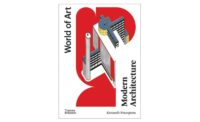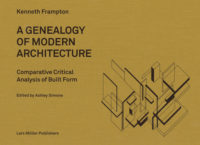A broad definition of “care” informs this book of essays and building case studies, which accompanied a recent exhibition of the same name in Vienna. While discussing interactions—among people, things, and values—with regard to acts of maintenance, repair, or sustenance, the editors, Angelika Fitz and Elke Krasny, explore what care means as it relates to architecture and urbanism. In particular, they are inspired by current environmental crises, as well as ongoing anxieties around social justice and inequality.
The two have gathered an assortment of contributors—architects, urbanists, political theorists, and specialists in sustainability and economic geography, among others—who suggest that we should view buildings and cities not simply as objects but as collections of relationships, an unfolding process that extends both backwards and forwards in time. We should ask, where do materials come from? Who will use, change, and maintain a structure in the future?
The larger argument of this investigation is that architecture and planning professionals should pay more attention to: practices of maintenance and repair, the political interests that designs represent, and considerations both social (labor, inequity, justice) and natural (plants, animals, ecologies). Twelve essays largely address questions of planning and politics, while 21 case studies focus on specific building projects such as affordable housing or facilities for nonprofit organizations. Common themes emerge, but there is no obvious connection between, for instance, an essay on a community land trust in central Rio de Janeiro and a dossier of photographs showing a redesigned 19th-century pavilion in Belgium. While the editors intend to address all scales of habitat “from the living room to the region,” it’s hard to traverse these sizes and distances so quickly.
Still, Critical Care suggests crucial questions: What would an ethical architectural practice look like today? What should architects care about? The built environment invariably involves a huge range of ethical issues: funding sources, labor practices, good governance, and social justice, to name a few. This book touches on all of these, but whether architects can meaningfully intervene in such concerns is a separate and unresolved question.
The built environment is designed, in part, by architects and planners, but buildings and cities are really the result of a complicated set of negotiations about what kind of world a society wants to create. For instance, the energy embedded in a structure and its materials represents the vast majority of its lifetime resource-consumption impact—even a perfectly controlled passive building has usually amassed enormous debts of fuel and other resources.
The ethics of architecture, if they exist, are only revealed over a long course of time. The editors and contributors are aware of inherent tensions, but the results are best seen as an initial effort at suggesting how to make and interpret architecture in a more careful way.






Post a comment to this article
Report Abusive Comment